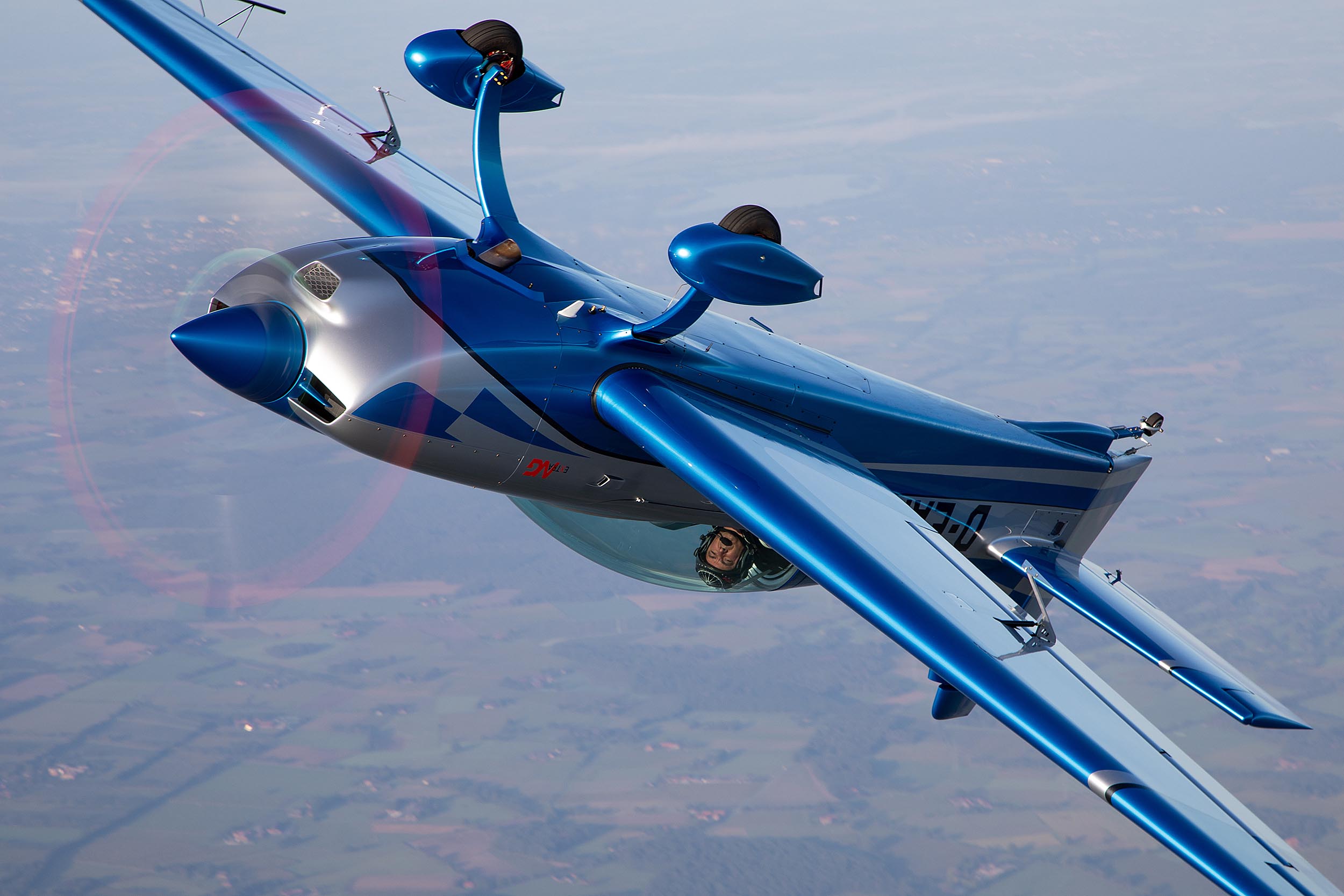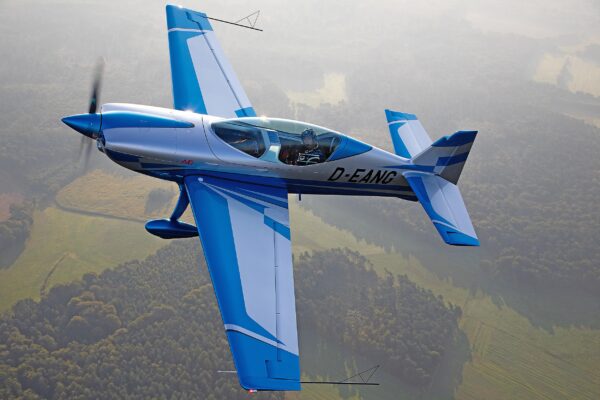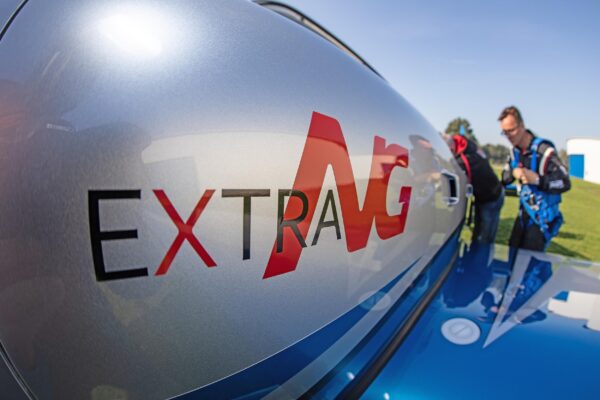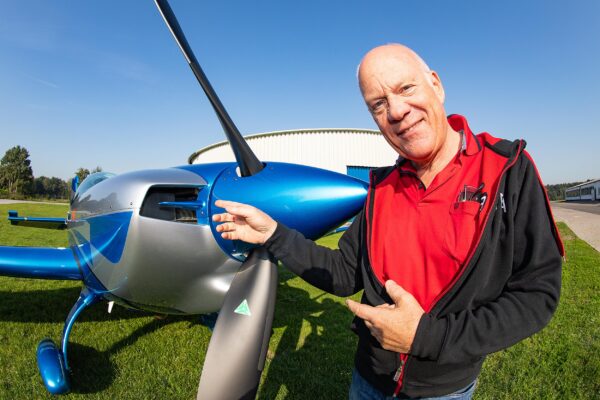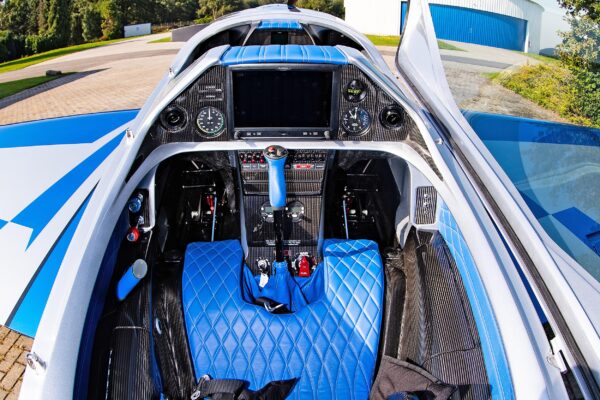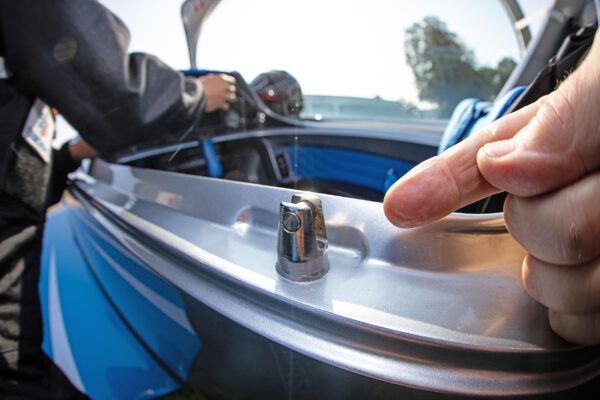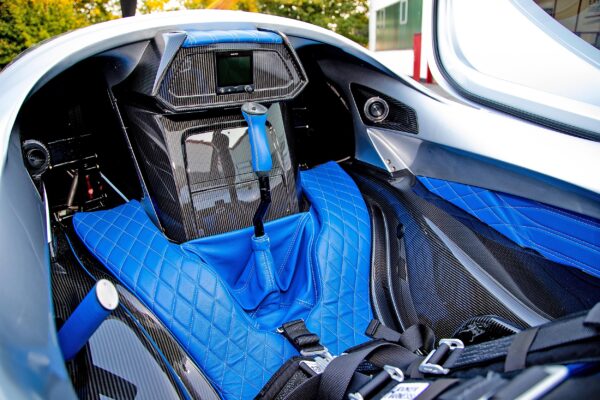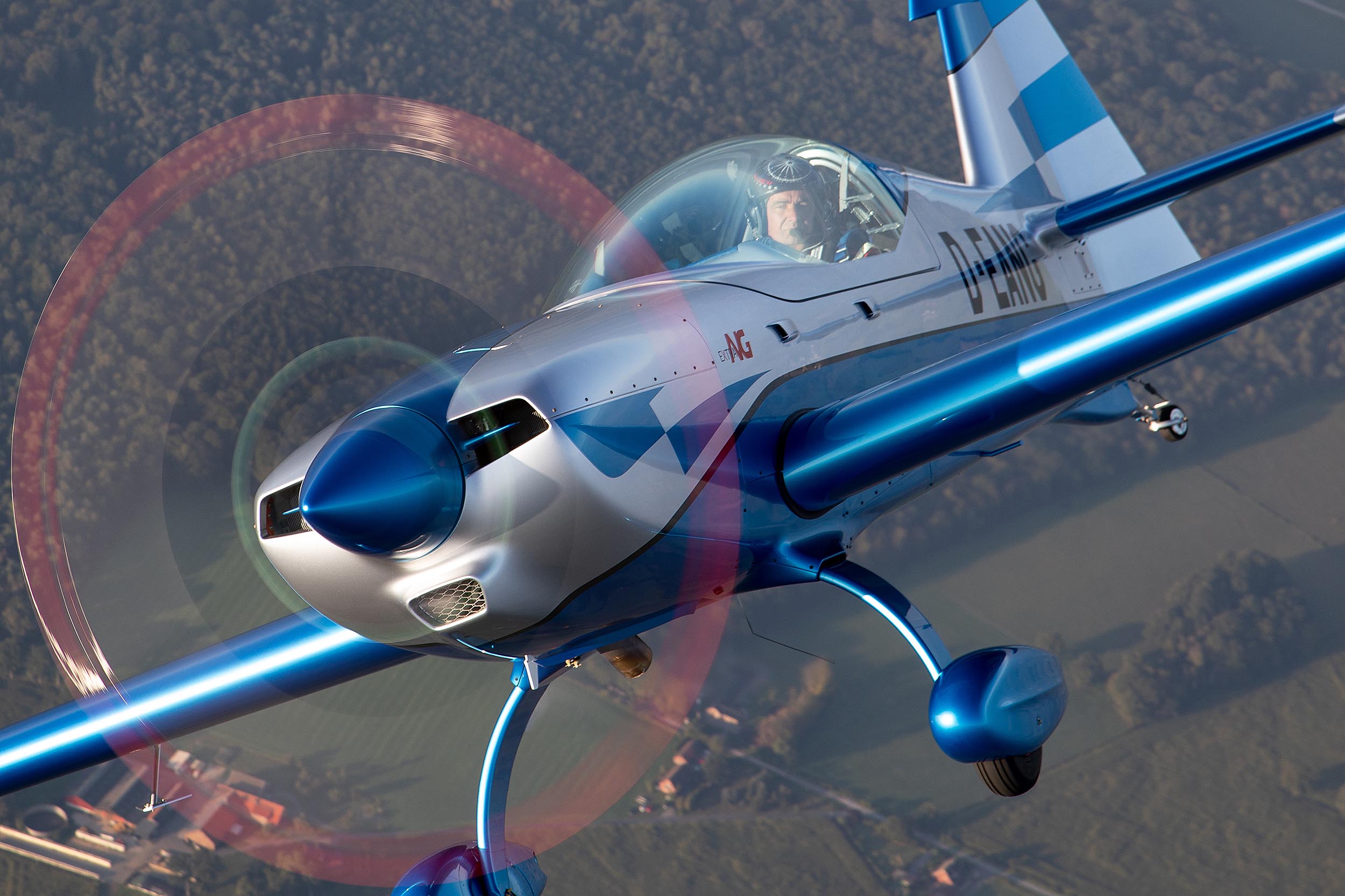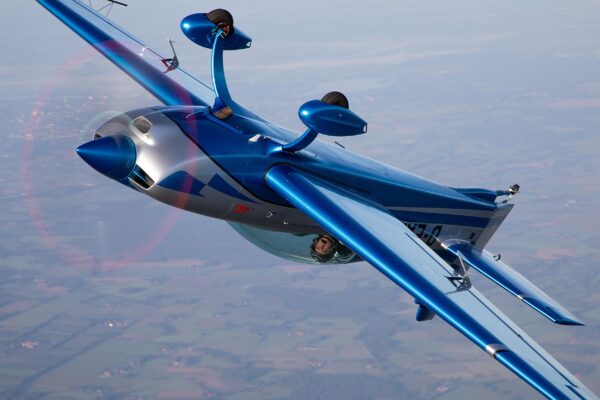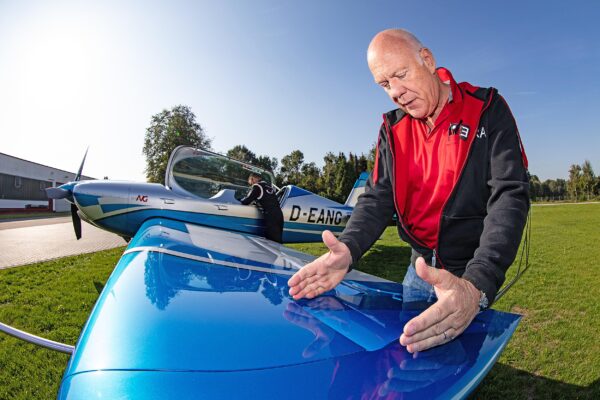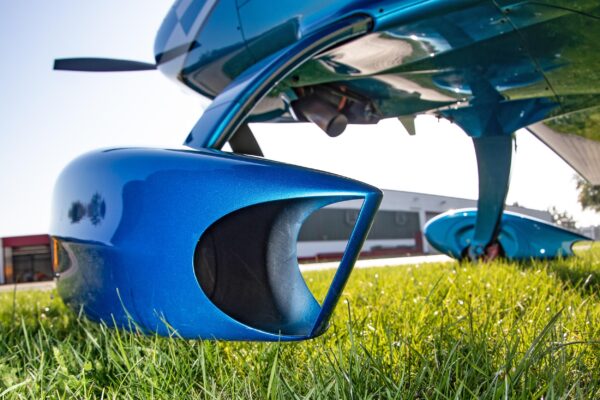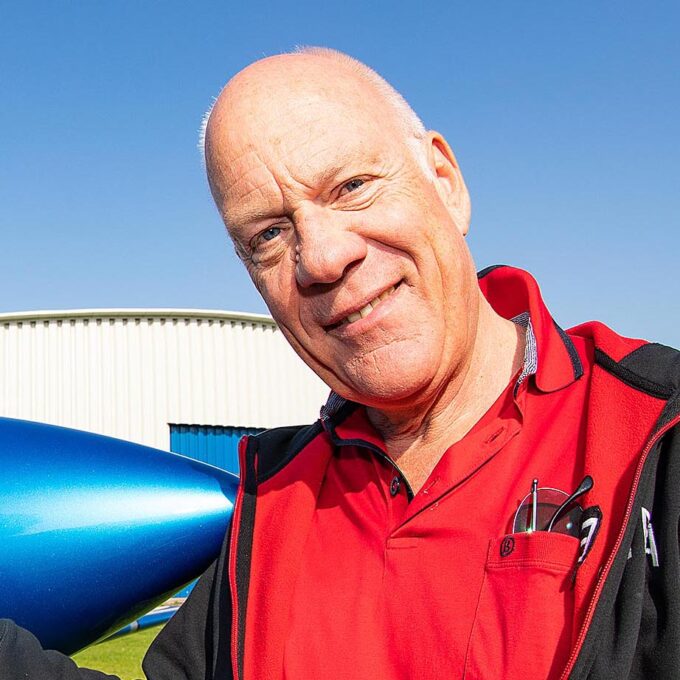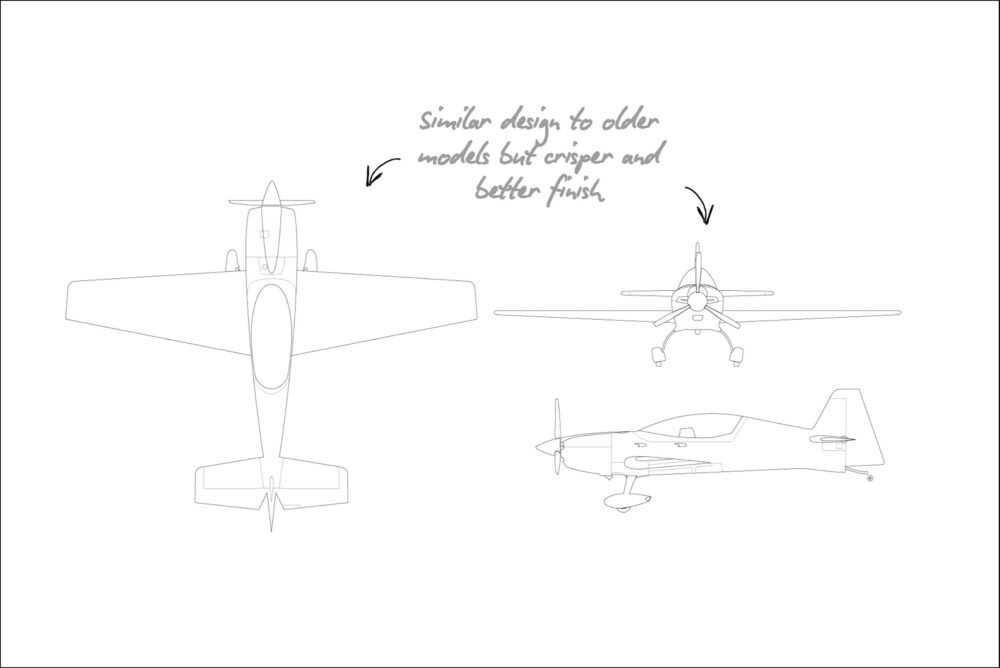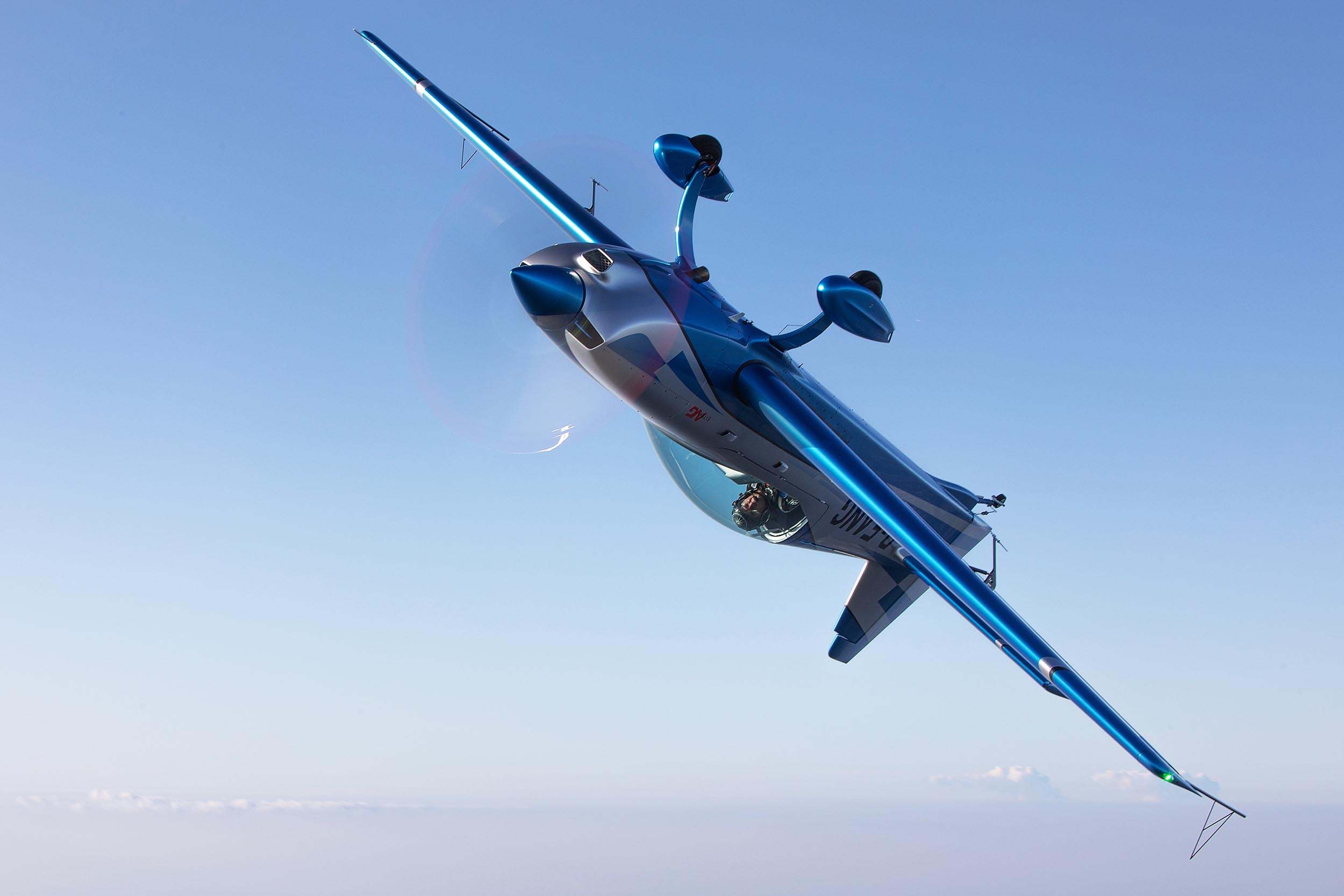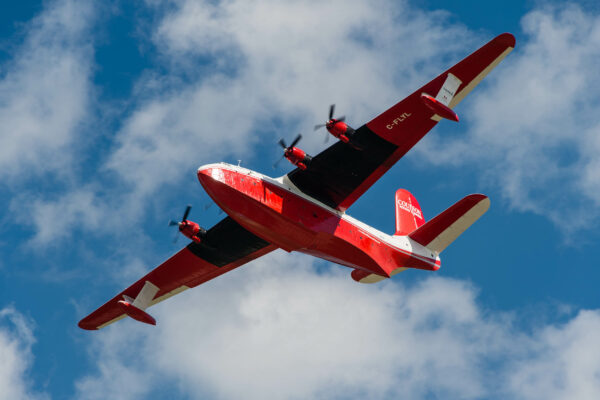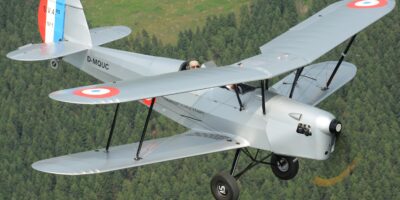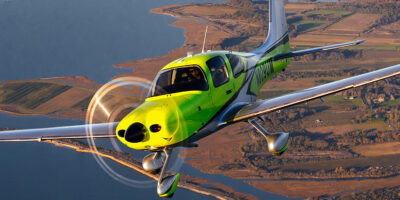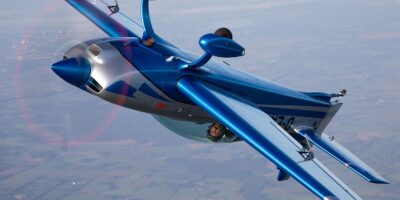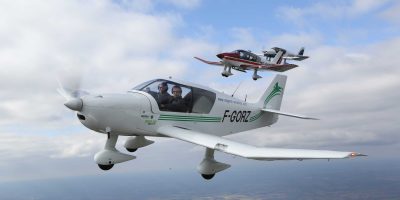Make time for Extra
Walter Extra talks to Peter Wolter about the Extra NG…
Q. Why have you waited so long to develop the Extra NG as a composite aircraft?
A. I’m still a fan of steel tube, because they open redundant load paths in the unlikely event of failure and have great residual strength. This is one of the good qualities of steel, it bends but is still capable of doing its structural job. Carbon is different. It’s either there or not. This has always kept me from using carbon fibre in the primary structure where the wall thicknesses are small. The wing is a different matter, thanks to the spar and the thicker skins.
Q. What challenges did you face?
A. Sometimes only double layer monolithic structures can do the load-bearing work without an underlying tubular steel structure. Single layer can fail if the load goes beyond what they are designed for. Additionally, thin composite sandwich construction can be easily damaged by mistake, be it with a keychain or screwdriver. Until now, that has been a compelling argument for me not to use composite for fuselage construction. We now have a technical solution that improves this property. We have patented the idea, so I can not give details yet.
Q. Did the all-composite GB1 Gamebird provide the impetus?
A. No. Our project is older than my knowledge of Gamebird. We spent a relatively long time solving the problems I mentioned with thin-walled monocoque composite structures.
Q. Empty, the Extra NG weighs 25kg less than the LX, your two-seater. Is the difference solely due to the composite hull?
A. Yes. Although there are small changes to the tail and wingtips, they do not have a significant impact on weight.
Q. Since you now use more fibre composite, is this all produced at your factory?
A. The primary structure, i.e. the load-bearing parts, we produce exclusively ourselves. For the secondary structure, we have a supplier with whom we have been working successfully for a long time.
Q. How many aeroplanes does Extra actually build each year?
Between two and three a month – we produce between 25 and 35 examples per year.
Q. When is certification of the NG expected?
A. We expect to receive final approval from EASA on 11 October*. So we invited the EASA people to a party (laughs). Co-operation with EASA has been really effective. The Luftfahrt-Bundesamt on the other hand… (does not laugh anymore). At the same time, validation from the FAA will follow the usual procedure. (*The Extra NG was certified by EASA on 12 October 2019 – Ed)
Q. Which market are you primarily targeting with the new aircraft?
A. The largest single market continues to be the US for us. We sell about 35 to 40 per cent of the production there. Everything else is spread across countries around the world.
Q. Is the Extra NG more expensive than the LX?
A. The prices are in the same order of magnitude. Instrumentation for the Extra NG is more expensive, while on the other hand the manufacturing processes are a bit easier than with the LX.
Q. Will there be a single-seater with a composite fuselage?
A. Not for the moment. We are now fully occupied with the Extra NG, the type approval is an important and intermediate goal.
Q. And the final goal?
A. For such projects it is normal that a lot of additional development is required. It’s all about small improvements, but ‘small’ in a composite aircraft still means that you have to get new moulds – you can’t just weld a lever somewhere else like you might with a steel tube structure.
Q. Will previous models, 330LX, 330LT, 300LP and the single-seat 330SC continue to be built?
A. Yes, absolutely. There is a fan base for these aircraft, with the single-seater of course addressing a different clientele than the two-seater. The SC is for people who do aerobatics at a professional level who want every last bit of performance. The performance difference when compared to the Extra NG is not very big – you can definitely win an Unlimited competition with the NG – but perhaps when not many very good pilots with their SCs are also competing.
Q. An Extra 330, called LE, flies with an electric motor. Will work continue in this direction?
A. No, that was a development project from Siemens. We had a partnership that was successfully completed. It was not about electric flight, but about the proof that electric motors are possible as drive units for aircraft.


